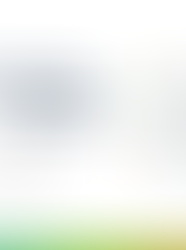ITR form for salaried employees- Know Your Facts About Filing Your Returns
- Dipali Waghmode

- Oct 31, 2023
- 4 min read

Anyone falling under the tax slab issued by the government of India must file a Filing Income Tax Return as a mandate. Whether you are a self-employed individual, salaried professional, or business owner, you need to follow the tax norms. Anyone person earning an income in India should understand the rules and regulations related to Income Tax and adhere to them.
According to the Income Tax Act 1961, you need to report your income and expenses to the Income Tax Department annually. Fortunately, you can now avail of the online ITR filing facility to follow these rules easily and stay on the right side of the law. Let us explain how salaried employees can file their ITR online.
Table of Content
Understanding the Meaning of ITR for salaried employees
The Income Tax Return Act has several heads, and salary is one of them. As per section 17 of the Act, the term salary includes sub-heads like wages, gratuity, pension, leave encashments, provident fund up to the chargeable extent, and advance payment of salary.
Income tax is calculated on the basis of the amounts received under these heads. Salaried employees earning up to INR 50 lakh as total income can file ITR online with the ITR-1 (Sahaj). Conversely, those with an annual income up to INR 2.5 lakh are exempted from paying tax.
ITR 2 is applicable for salaried individuals earning more than Rs 50 lakh annually. Income is the criteria determining the applicability of ITR 1 or ITR 2 for salaried employees.
ITR form for salaried employees-Tips to income tax return filing online
Once you know that you fall under the category of salaried employees and are not exempt from tax filing, you should understand the steps for filing your ITR. Here is a simple checklist of tips for ITR filing:
Visit the income tax e-filing portal
The first step is to visit the income tax e-filing portal where you can file your return in only a few clicks. You can search the portal online and access it from there.
Register/Login as a User
As a first-time tax filer, you will have to register as a new user using the ITR e-filing portal for the first time. It requires you to provide your details, including your PAN. Once you become a registered user, you can log in later with your PAN, and password, and enter the captcha. All salaried employees are managed to have an account on the e-filing portal to file ITR online.
Select e-tax Filing
After registering and login, you need to select the “e-file’ option. You will see a drop-down list. Choose “Income Tax Returns” followed by “file income tax return”.
Choose the Filing Method
After this step, you will be redirected to a new page. Here, you can choose to file a fresh ITR application or continue a previously saved one.
Pick the Assessment Year
At this stage, you will have to pick the assessment year while you want to file your income tax return. Essentially, assessment Year refers to the year after the end of the financial year when you earn the income. Furthermore, select “online” from the modes of filing. Click to continue.
Choose Applicable ITR form for salaried employees
Salaried individuals should choose for ITR -1 or the SAHAJ form as it is applicable to them. After choosing the form, click to proceed to the next step.
Opt for Status
You will see status options such as Individual, HUF, and others. As a salaried person, you should select “individual” to file ITR.
Select the Reason for Filing ITR
At this stage, you will be asked for the reason for filing the ITR. These could vary from your income not being covered in the basic exemptions, incurring an expense exceeding INR 2 lakh on foreign travel, and more. Choose the relevant option and click to move to the next step.
Submit All Relevant Details
You will also have to provide and verify some details to successfully complete the ITR filing. These include:
Personal information, including your basic contact details, bank details, aadhar, and PAN details
Gross total income as a salaried employee, covering your salary, advanced salary, gratuity, leave encashments, pension, etc
Total deductions, including provident funds, pension, and tax-saving deductions
Payment of taxes by you and the employer with TDS and TCS calculations
Total tax liability, along with the fees and other charges
Verify Your ITR Application
Providing all your information for the ITR process is only half the work. You also need to complete the verification process for successful submission. You can do it in several ways, such as:
Through Aadhar OTP
Through DSC
Pre-existing code by a pre-verified bank
E-verify later
After verifying your application, you are all set to submit it. You can also save it for previewing it and submitting it later. Ensure complete caution and check every field and form carefully before submitting your return because you cannot make any changes after clicking the submit button. You can log in to the portal later and track the ITR filing status.
Conclusion
As a salaried employee, you must understand the significance of filing your returns accurately and timely in an appropriate manner. Even if you have the TCS and TDS deductions from your employer, you cannot consider that you are safe from any further tax liabilities.
You must check your filing status and go ahead with these steps unless you are exempted from tax filing. The best option is to work with a tax professional who can guide you about making submissions. With expert assistance, you can avoid errors and hefty penalties in the long run.















Comments